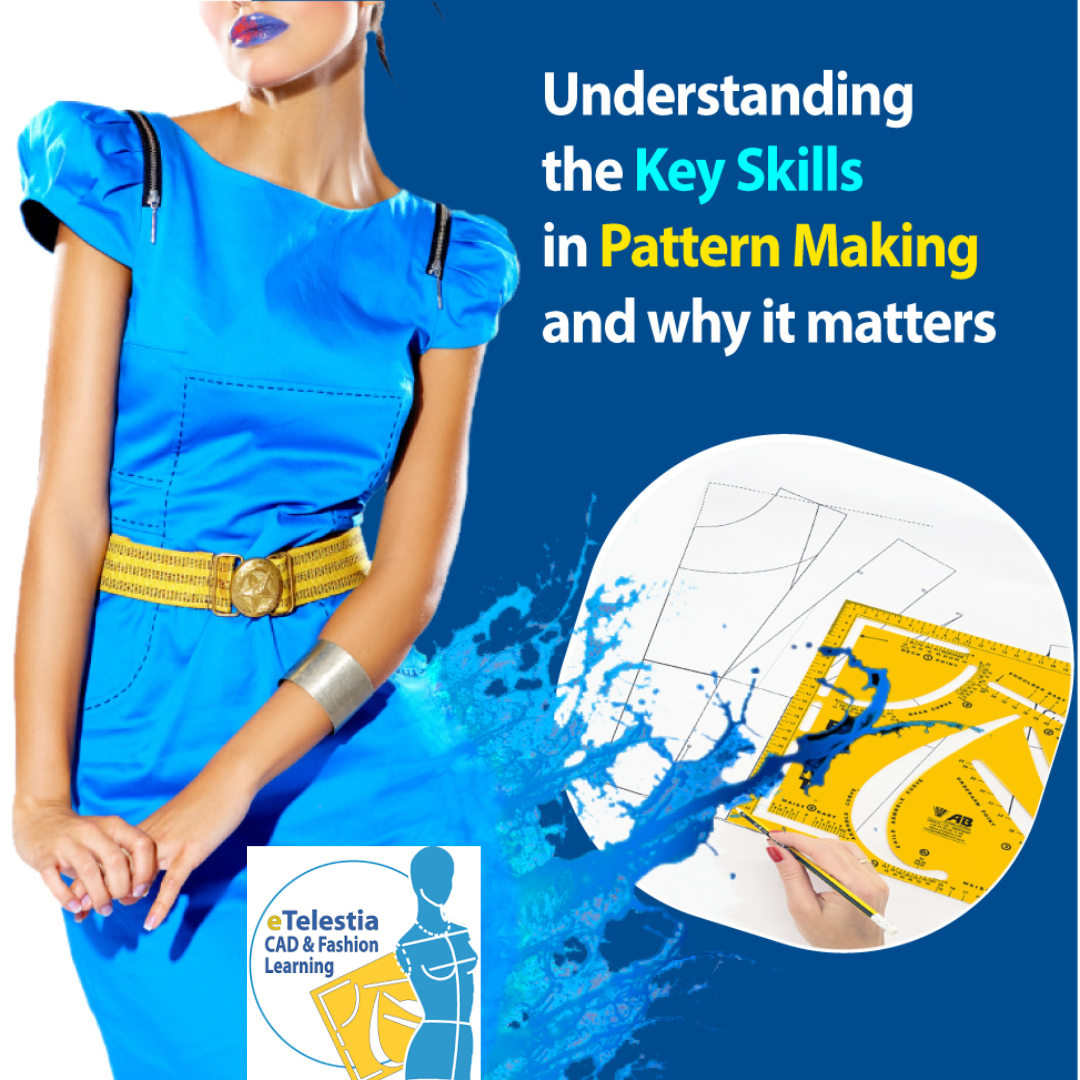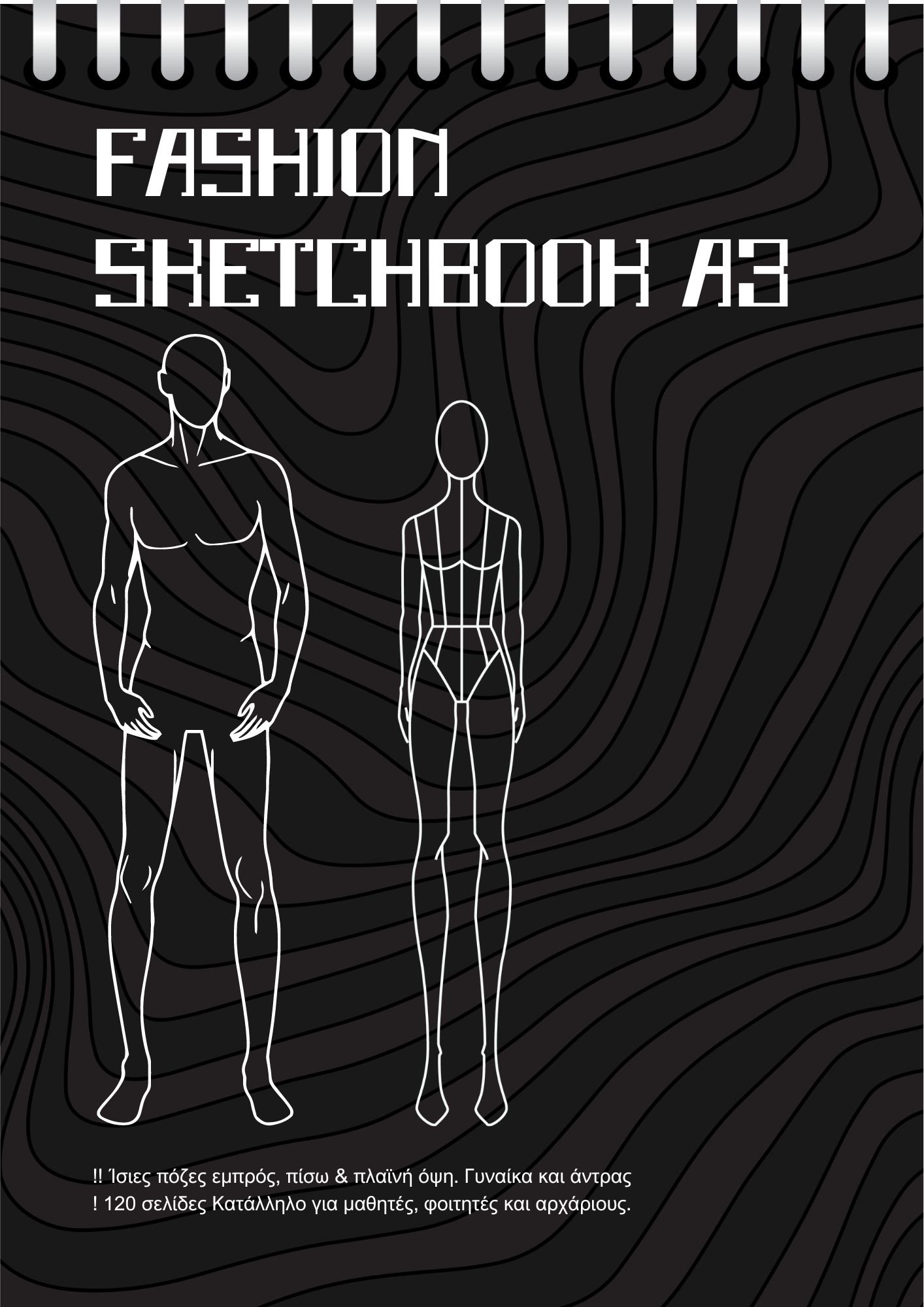In this article we will take a look back at ancient clothing. Knowing the history of fashion by season makes it easier for us to understand modern fashion.
Ancient clothing, Egypt.
Ancient Egyptian women’s clothing:


A feature of ancient Egyptian clothing was that it covered the lower body, leaving the upper body uncovered. Egypt originally wore a linen cloth that passed between the legs and tied at the hips. The rest of the body was left uncovered. Only the nobles wore a cloak that passed through the elbows and formed pleats.
Then came the καλασρίς . The fabric hugged the body and reached to the calves or ankles. The chest was left uncovered and fastened to the shoulders with a strap or wide straps. The basket often reached up to the neck with or without sleeves.
The Asian influence transformed the kalasiris into a mantle. A large piece of fabric with an opening in the head and a side seam from the waist to the hem. The fabric folded under the chest and looked like a cape.
Ancient Egyptian men’s clothing:

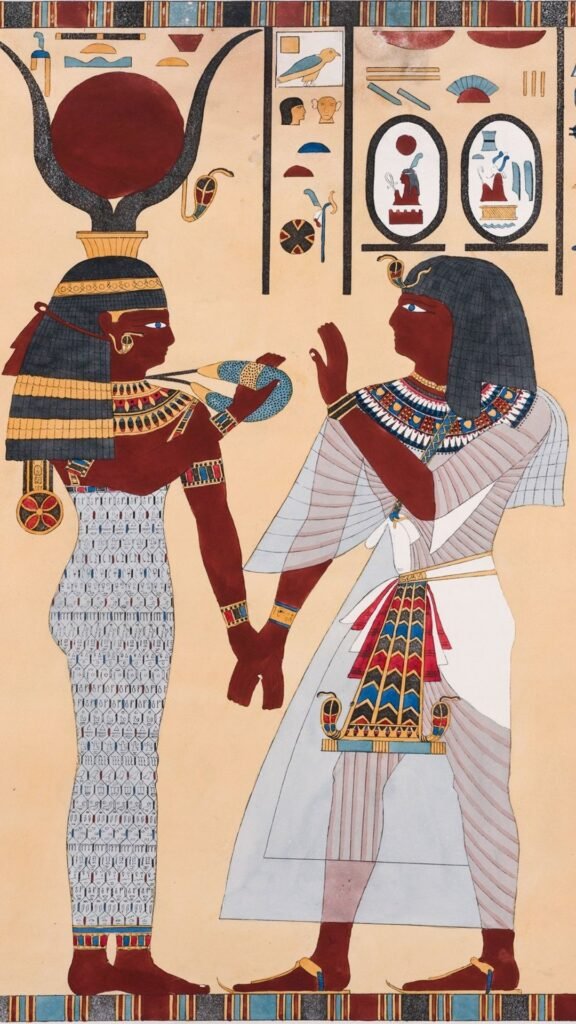
The basic garment for men was the centi where it was a simple linen cloth that passed between the legs wrapped around the hips and reached to the knees. Many times it was fastened with a belt. Pharaoh’s senti was thinner and full of pleats and jewelry.
Often the senti made up more fabrics on top of each other and the outside was the longest of them all. It looked like a skirt. sedi was the only garment for men. Later they also wore kalasiris above the centi.
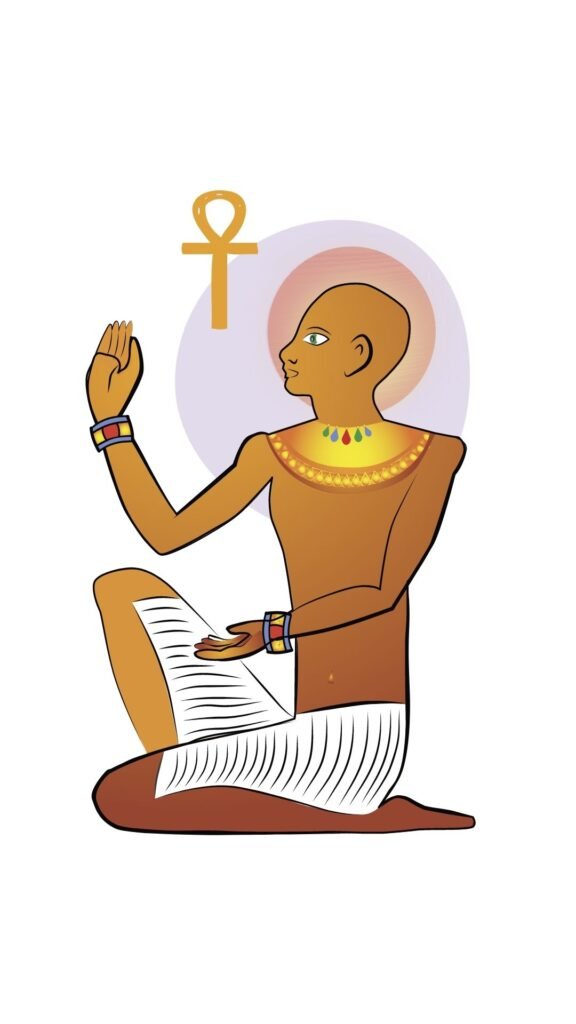
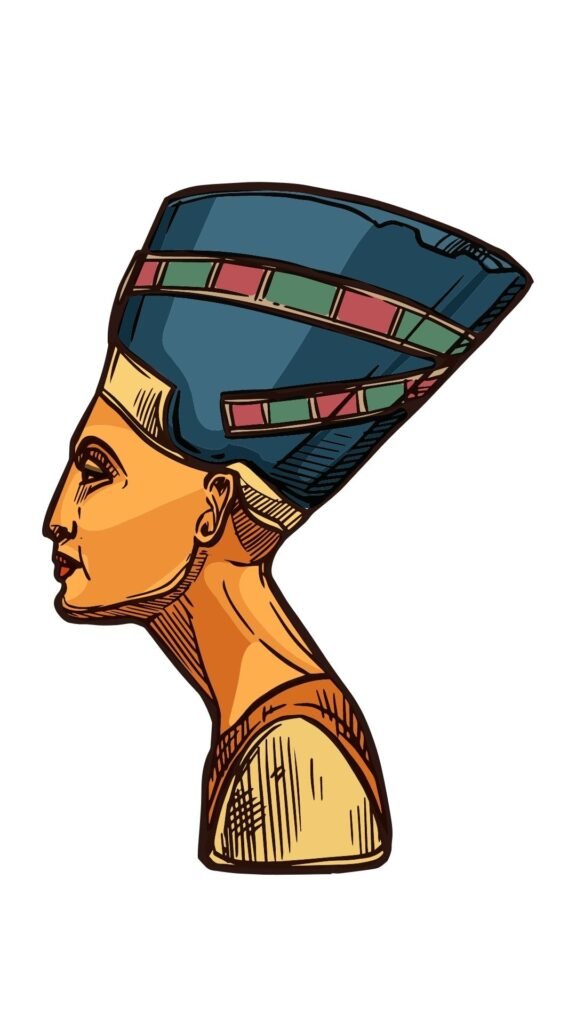
Their hair was cut straight, straight or with short braids. The nobles wore symbols of power on the forehead, crowns and conical matrices. The shoes were the prerogative of the rich which were sandals with straps on the toes and pointed ends. An important feature of the ancient clothing of the Egyptians was a collar ring made of leather, metal or fabric and adorned with precious stones. He also protected them from the sun.
Ancient clothing, Greece.
Ancient Greek women’s clothing :
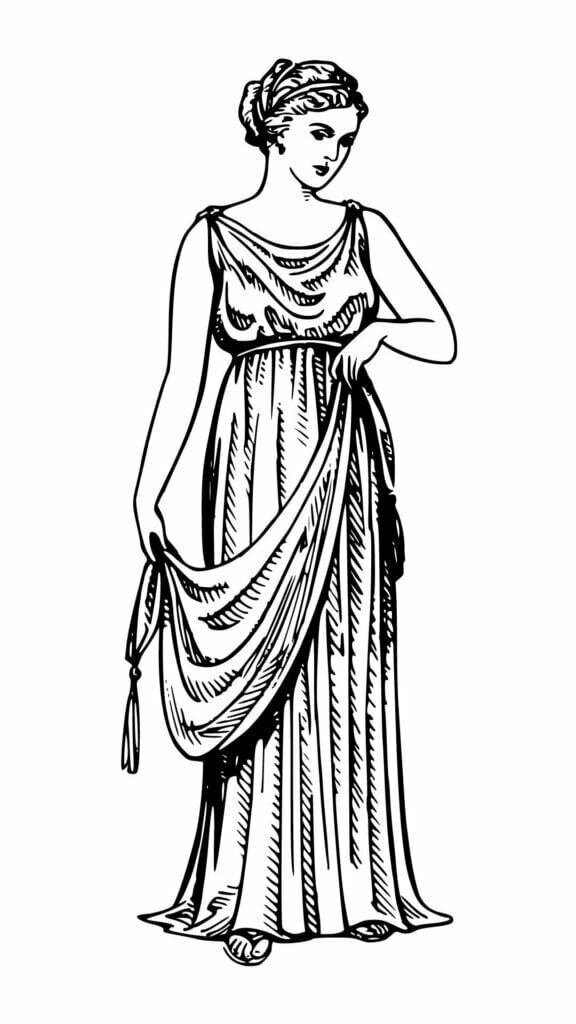

The ancient Greek women wore it veil , which was a rectangular fabric wrapped around the body. It started under the armpits and then passed to the shoulders where it was fastened with pins, buttons or knots. The fabric that passed over was thrown in the middle, while the right part was left free. This long garment was worn with or without a belt.
They also wore tunic , where it was made of light fabric and tied to the side. The long tunic reached to the fingertips and had apparent sleeves. These were created by the side seams and the shoulder seams. The tunic was filled with pleats that created the fabric from the various bindings, in the middle, at the hips or under the chest.
Sometimes the veil and the tunic were worn parallel to the veil above the tunic.
Another garment was the imation who wore it for a coat wrapped around the body and also covered the head.
Ancient men’s clothing of Greece:
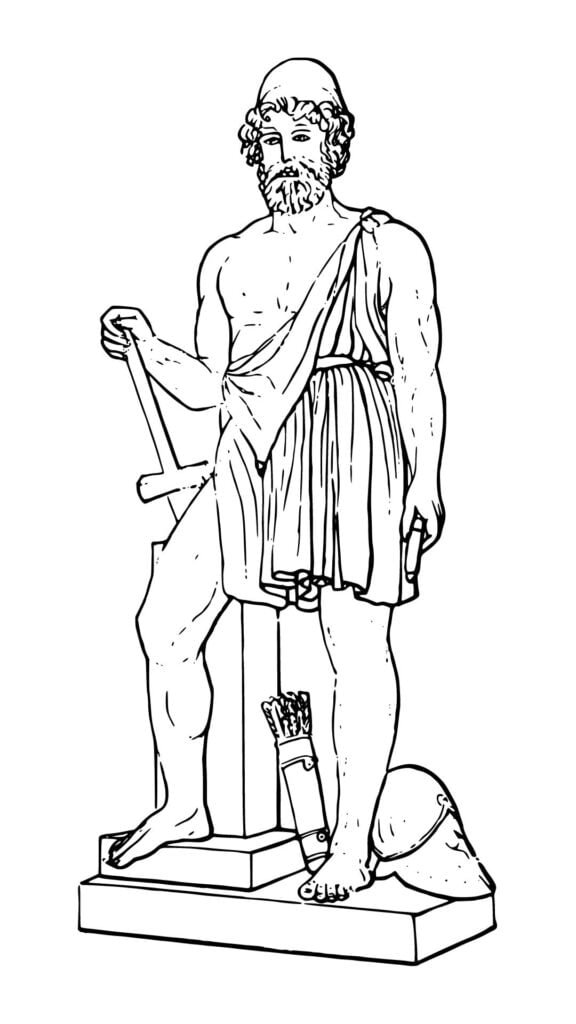

The men’s clothing corresponding to the women’s veil was thechlena. A woolen cloth that passed through the shoulder and was tied at the front or on the right side. The fabric reached to the knees.
Themen’s tunicalso reached to the knees and was tied with a belt in the middle. The long tunic was the prerogative of noble men.
Another garment that gave more freedom of movement was the exomis . It was a short garment that left one shoulder out.
The men’s imation it was a large fabric that was wrapped around the body in various ways and was sometimes the only garment.
Horsemen and travelers wore the chlamyda. It was a woolen cloak, thrown on the left shoulder and fastened to the right shoulder, so that the right hand was left free.


Greek travelers wore hats. The petasos, was a circle hat with a round. It was mainly worn by teenagers. The men also wore a narrow hat, calledpilo. Another circle hat with a conical end served as protection from the sun. Their shoes were sandals with laces that tied high.
Ancient clothing, Rome.
Rome Ancient Women’s Clothing:


The women were wearing tunicafrom the inside. It was a piece of cloth with side seams and holes for the head and arms. Sometimes sleeves were also sewn. It was fastened with a belt and adorned on the shoulders. Another garment was the stola which was very similar to the Greek tunic. It was wide and often crawled. They wore it with a bra that was called strofion.
The palla was a woolen cloth they wore when they left the house. They wrapped it around the hips and often covered the head.
The penula was a cloak. It was round made of thick wool or leather. Sometimes also had a hood.
Ancient Roman menswear:
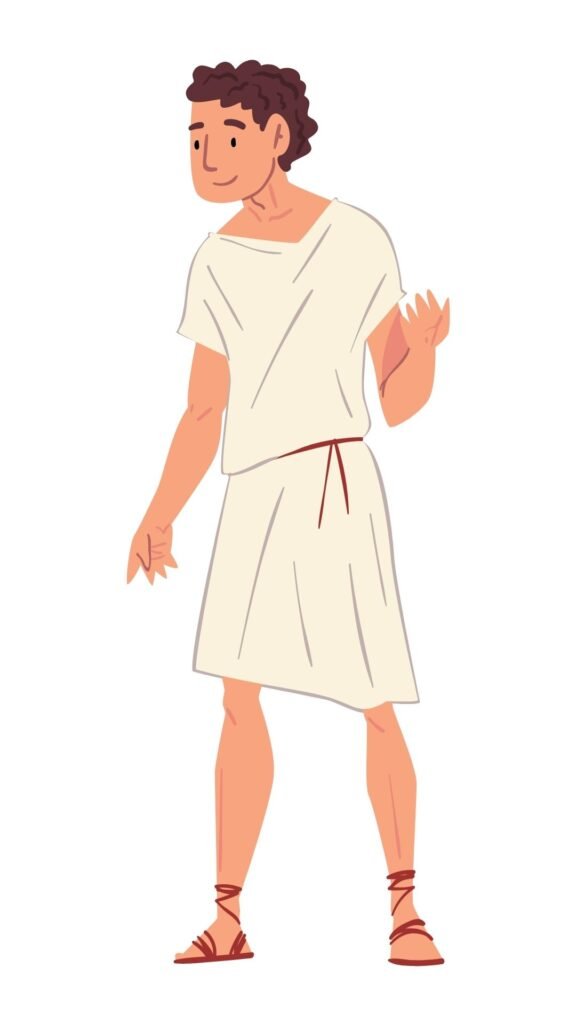

Roman clothing was based on social classes. It reflected the very society of Rome and the official distinctions of them and of foreigners through a very organized system of rules.
Roman clothing could be classified into two categories:
A) In those worn by the head, such as men’s tunic which reached to the knees and was tied with a belt in the middle. Many times it even reached the ankles. When the tunic was decorated in red then it showed a title of nobility.
B) In those that were wrapped around the body. Like the toga. At first it was an outer garment worn by women as well. It also served as a blanket for the night. It was a large piece of woolen cloth, oval in shape and worn wrapped around the body forming many pleats. It was a garment that honored the wearer.
The πάλλιον was a rectangular fabric that was considered easier to use and simpler than the toga. At first it was made with cheaper materials, but later more luxurious palis appeared with ribbons, gold-colored, colorful and often brought portraits. It is equivalent to the female palla.
And the men wore it penula in bad weather.
Ancient clothing, India.

In general, the ancient Indian garments were all wrapped around the body and without seams. Each was a complete set of a separate look. Both men and women wore fabrics in a similar way.
The sari and Dhoti worn today is similar to fabrics worn thousands of years ago.
The first references to the production of textiles and clothing in India date between 2500 to 2000 BC. in the culture of the Indus Valley in its two cities, Mohenjo Daro and Harappa. Knowledge about Indian clothing is based on the study of sculptures and depictions of men and women in clothes wrapped around their bodies only.
The statuette of the “high priest” wears a shawl with patterns with a formal drape. In other statuettes and engravings they look near draped sarong like skirts. Also jewelry and intricate hairstyles.
Similar clothes were later seen in paintings where the figures are sparsely dressed with a tight sarong around the waist emphasizing the curves along with a thin loose shawl or choli.
The non-sewn garment is no less sophisticated than the sewn garment.
And while traditional Indian clothing was Unisex, the fabric and the way it draped were characteristic of the user’s social status and profession.
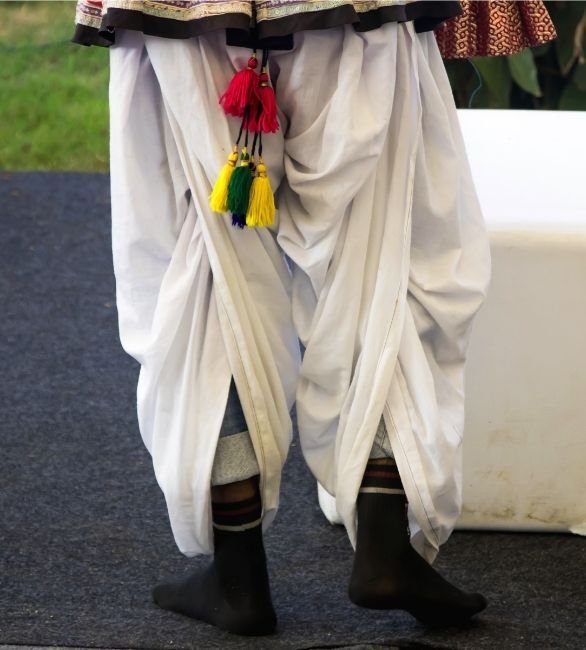
There were three categories:
A) Uttariya or upper garment .
The Uttariya or upper garment was usually made of cotton or silk with decorated borders and fringes. The way they wore it was proportional to the user’s profession. In court, the uttariya could fall on one or both shoulders and diagonally to the chest. It could also relax the back with the free limbs hanging both under the arms or wrapped around the wrist.
For practical purposes, the working classes wrapped the thick cotton uttariya around the head for sun protection or wrapped it comfortably around the waist, leaving the hands bare. The women wore it as a head covering that was left hanging directly on the back or tied with a ribbon.
B) Antariya or lower garment .
Antariya made of white cotton, linen or muslin was the main garment for both sexes. Occasionally it could be embroidered in gold and adorned with precious stones. The antariya worn by women was initially made of opaque fabric and later of transparent material. A small piece of cloth fell in the center at the front, passed under the legs and was fastened in the center at the back. It could also be worn as a skirt wrapped around the hips.
C) Kayabandh or scarf .
A strip of fabric passed through the middle and tied in the center at the front. The way it was tied and its decoration could be simple or complicated.
The men wore these fabrics wrapped around the hips and passed them between the legs. They were linen fabrics and they called them kachcha . Ordinary citizens and farmers wore kachcha in a smaller version. The length of this garment ranged from the waist to the calves for the upper classes.
It should be noted that trade and invasions were influences in the design and development of clothing.
For example in the Kushan period, due to trade with Greece, the antariyas developed by forming pleats associated with the Greek tunic. Kushan clothing for women showed the change and evolution of clothing similar to the Greco-Roman costume.
Unchanged in essence, is the traditional sari six to nine meters, where the way it is formed
the drape, is indicative of the geographical location in India where the wearer resides.
Ancient clothing, Germany.
German early and later period:
From findings of tombs of the Bronze Age (1800 – 800 BC), we have a picture of the clothing of the then German culture. The costume of the time maintained its own character. Later in the Iron Age (800 – 600 BC), influences from other cultures from ancient times began.
German clothing was adapted to the cold northern climate. Wool, linen and sheepskin were the materials used to make garments. The clothes were made with tools made of stone and bones.
Ancient German women’s clothing:
Women in the Bronze Age wore a skirt – blouse. Their skirt started below the chest and reached to the ankles. Pleats were formed in the middle and fastened with a braided belt or a rope. The sleeves of the blouse looked like those of a kimono. The decoration was undertaken by a buckle.
The little girls wore short skirts made of ropes. They were also thick ropes that passed through a shaped link.
During the ice age, a pleated dress appeared, which passed through the head and was fastened to the shoulders with pins. They wore it with a single or double belt. Usually without sleeves but with a long-sleeved blouse from the inside or top.
From the inside they wore a bra and ribbons on the legs and thighs. A large cloth served as a cloak. It was the coat and it also covered the head.
Men’s ancient German clothing:
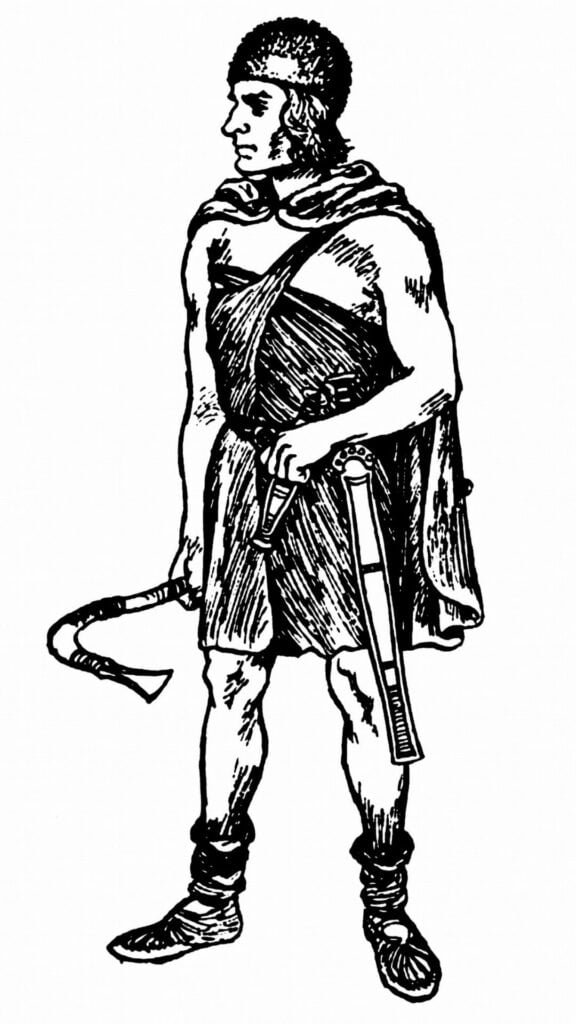
The men wore a skirt wrapped around the body and tied at the waist with a belt. It reached from the armpits to the knees and was fastened with a strap that passed through the left shoulder and fastened to the back.
In the Iron Age they wore trousers that were tied to the shin. When their trousers were short they wore leggings or bandages. Their blouse was long up to the knees and closed up to the neck. With or without sleeves. Many times they wore a belt and other times they wore a hood.
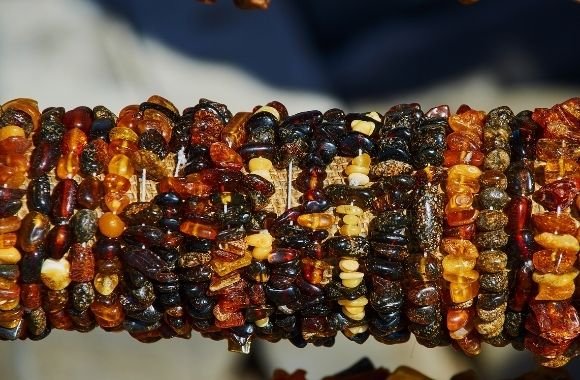

Their shoes were made of sheepskin with the fur inside. Jewelry was part of the costume Imposing buckles, brooches, collars, bracelets, jewelry on the legs, earrings, rings, all made of copper or precious metals, with precious stones, pearls, enamel or Bernstein.
See more pictures of ancient German clothing.
Now that we have learned so much about ancient clothing, knowledge combined with the imagination and talent of each will help each of you to create a fashion line inspired by ancient cultures and their combination.
Get paper and pencil and start drawing or get one fashion Sketchbook with ready-made fashion figures so that you do not waste any time.


